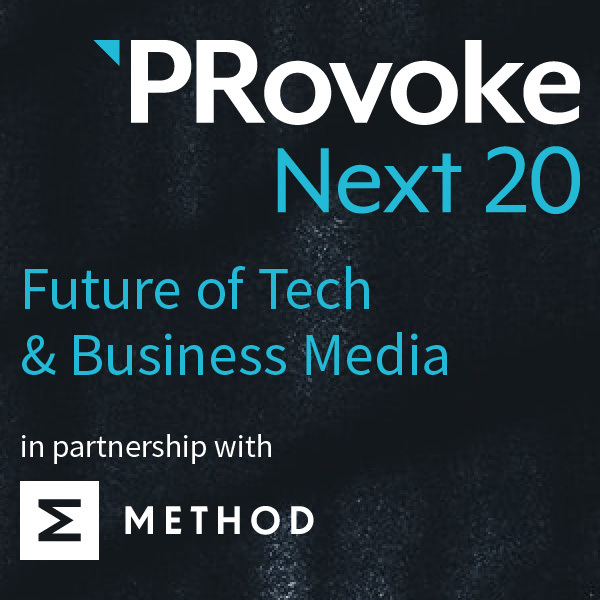Method Communications 25 Aug 2020 // 4:20PM GMT

There are currently four overarching narratives in the U.S. that are commanding attention and dominating headlines:
1. The pandemic - symptoms, infection rates, testing, vaccines, borders, masks
2. Closely related, the economy - the likelihood and impact of a prolonged recession; jobs, unemployment, forecasts, data
3. Racism - Black Lives Matter, Karens, monuments, building names, housing, health, the history of inequality
4. The upcoming election - Trump, Biden, Kanye, headwinds, strategy, voting, disinformation chaos
Each of these started as a seeming "moment in time" but it's clear all are compelling and complicated and not likely to fade anytime soon.
And for those of us in tech, big tech/FAANG might be a fifth. These companies are certainly having a moment, though with topics of antitrust, boycotts, censorship, front and center, whether this moment will ultimately be perceived as positive or negative isn’t yet clear.
Top tier media are focused on these overarching narratives, and the top tier events that were reliable generators of content and coverage, not to mention relationships, have been canceled or moved online. No doubt, these are tough times for tech companies hoping for earned media coverage and for those charged with garnering it, but they’re not impossible. It’s just important to understand the ground rules for this new game.
- Be very clear about goals - who do you want to reach and what do you want them to do? Where do the people you want to reach turn for information relevant to the decision you want them to make and/or the action you want them to take? If you’re not sure, ask for some feedback. With Method client Confluent, for example, we’ve placed multiple product features surrounding their latest product news and business momentum in Protocol, ZDNet, TechTarget and others, as the decision-makers at potential customers depend on these publications for insights.
- Decide what you’ll speak to, and what you won’t. PagerDuty CEO Jennifer Tejada was early to the tech+COVID 19 conversation and one of the first tech CEOs to speak out publicly on racial injustice in the wake of George Floyd’s murder. Your company might decide that you are not going to express a position on the upcoming election, and don’t have anything to contribute about COVID-19, but that you will take a stand against racism. The point is not that everyone has to speak out on everything - it’s to be aware of the landscape and make a conscious decision.
- Watch your swim lane. If what your company is doing is directly related to one of these narratives, you can try for a spot in that lane. Virtual events startup and Method client Hopin announced a $40 million Series A led by IVP and Salesforce Ventures, paired with strong customer growth of 15,000 companies on the waitlist; TechCrunch, Crunchbase and SiliconAngle all saw a valid narrative link to the pandemic’s impact on remote events. But if not, stay out of the way. We’re seeing blowback in media circles for a lack of authenticity - a company posting on social media about their commitment to diversity without addressing or acknowledging their all-male, all-white management team and board, or offering the perspective of a tech CEO with no medical training or experience on the pandemic (versus, say, an epidemiologist). Instead...
- Create your own conversation. Use the channels and platforms you’ve established - your blog, a webinar, LinkedIn, Medium - to create conversations about topics that matter in your own world with people who also care about these. Method clients Acxiom and Adyen do a fantastic job developing timely and relevant content for their community, aligning their customer’s needs with helpful insights, fresh perspectives and shared ideals. This content gets shared through social channels and e-newsletters allowing audiences to easily scan, dive in, comment or share.
- Walk before you run. If you’re really ambitious with lots of time and dollars to invest you can host your own event, as Domo and Young Living did with their annual conferences. Domopalooza was one of the first tech conferences to pivot to a virtual event (the team made the switch in just 12 days); Young Living’s included 30 virtual sessions across over 20 time zones and encouraged attendee interaction through live event chat. But taking a more active role in creating conversations for your company is not all or nothing - you don’t have to host a huge virtual user conference all of a sudden. You can look to participate in others’ events, as Galileo CEO Clay Wilkes did at CB Insights’ recent tech conference, or perhaps to partner with a media publication or another company to organize and/or host.
These rules are important right now because we’re all in uncharted territory. Patience is worn thin, tempers are fraying, anxiety is high and rising, which means the likelihood of being called out for behavior perceived as insensitive or out of touch is higher. But they’re pretty solid rules for the best of times, as well as the worst.


































.jpg)


.png)
.jpg)










